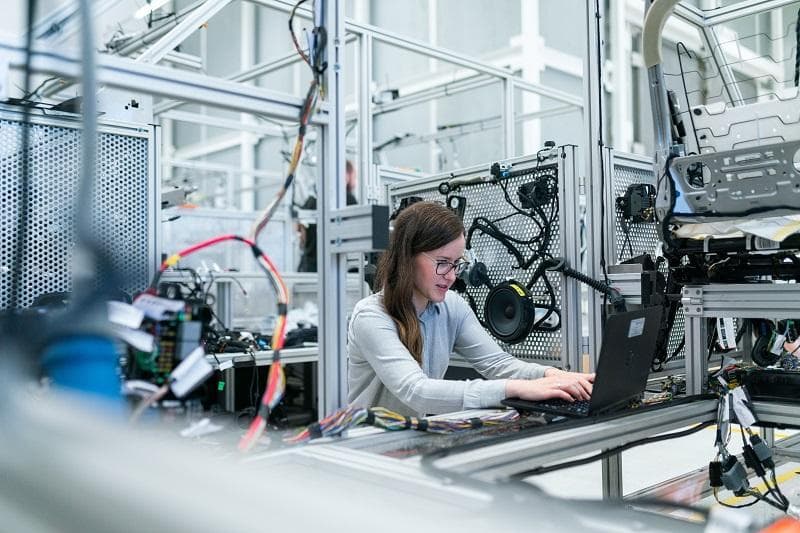In today’s competitive industrial landscape, extending the life of assets isn’t just a desire—it’s a necessity. With the high cost of machinery and the challenges of global competition, finding methods to maximize the usefulness of existing equipment can bring substantial financial benefits.

The Financial Strain of Equipment Degradation
Industrial machinery is central to many business operations. But when this equipment starts to degrade, the financial implications can be substantial and far-reaching:
- Unplanned Costs: Equipment wear often culminates in sudden breakdowns. This not only means unexpected repair or replacement costs but also disrupts budget plans and can stretch resources thin.
- Operational Hurdles: Breakdowns halt production, potentially leading to order backlogs. In a fast-paced industry, such delays can adversely affect customer relations and even result in contract losses.
- Rising Operational Costs: As machinery ages, it tends to operate less efficiently. This inefficiency can lead to extended production times and higher energy bills, which, in turn, can impact profitability.
- Safety and Legal Risks: Malfunctioning equipment increases safety hazards. Incidents can lead to lawsuits or regulatory fines, further straining finances and potentially harming a company’s reputation.
Equipment degradation isn’t merely a physical wear and tear issue—it’s a significant economic concern. Leveraging tools like the continuous vibration monitor can aid businesses in staying ahead of potential machinery issues, ensuring optimal operation and fiscal health.
Continuous Monitoring: A Proactive Approach
Gone are the days when industries would wait for a machine to break down to address an issue. Continuous monitoring provides real-time data on equipment health, enabling preemptive actions. Among the extensive benefits of using the continuous vibration monitor, a standout is the ability to detect abnormalities early. This digital sentinel keeps watch, analyzing equipment vibrations to pinpoint potential issues before they escalate into substantial problems. These tools not only conserve capital by extending asset life but also offer peace of mind to businesses aware of their machinery’s status.
Financial Advantages Arising from Consistent Equipment Surveillance
Delving into the world of continuous monitoring may initially appear as a costly venture. However, a thorough examination of its long-term benefits showcases its value as a smart investment:
- Optimized Asset Utilization: One of the direct benefits of using the continuous vibration monitor and other such tools is the elongation of machinery lifespan. Prolonging the serviceable life of equipment translates to fewer instances where capital-heavy investments are needed for replacements. This not only ensures cost savings but also optimizes the utilization of the asset.
- Stability in Operations: Breakdowns and unexpected halts in production are detrimental for any industrial operation. With continuous monitoring, these unplanned downtimes can be significantly reduced or even eradicated. A continuous production cycle ensures that there is no disruption in the revenue flow, safeguarding the business against financial volatilities.
- Cost Savings through Proactive Maintenance: Equipment that is regularly monitored and maintained tends to operate at its peak efficiency. By identifying and rectifying potential issues before they escalate, businesses can ensure that their machinery is always running optimally. This not only reduces wear and tear but also leads to considerable savings on energy bills. Over time, these energy cost reductions can compound, resulting in significant financial benefits.
- Creating a Safer Industrial Environment: A workspace with malfunctioning equipment is a breeding ground for accidents. Continuous monitoring drastically reduces the occurrence of such malfunctions. This not only ensures the safety of the workforce but also significantly reduces the chances of legal disputes or compensations arising from workplace incidents. A safe environment also means higher workforce morale and productivity.
In essence, the adoption of continuous monitoring, while demanding an upfront investment, promises a multitude of financial advantages in the longer horizon. Businesses that recognize and capitalize on this stand to gain a competitive edge, ensuring their fiscal stability and growth.
Bridging the Gap: Training and Implementation
For all its merits, the successful adoption of continuous monitoring isn’t merely about acquiring the tools. It demands a strategic integration into the existing infrastructure. Key considerations involve:
- Training personnel to understand the data output and act upon it ensures that the benefits of using the continuous vibration monitor are fully realized.
- Setting up a system for regular reviews of monitoring data can flag potential issues, allowing for timely interventions.
- Aligning maintenance schedules with the insights from continuous monitoring ensures machinery receives attention when it needs it most.
- Keeping the monitoring tools updated and calibrated ensures data accuracy and relevance.
In the vast expanse of Industry 4.0, the philosophy is clear: proactive action trumps reactive measures. The dawn of tools like continuous vibration monitors exemplifies this approach, offering industries a tangible method to extend asset lifespan and conserve capital. As businesses integrate these solutions, they not only embrace modernity but also set themselves up for long-term financial prudence.